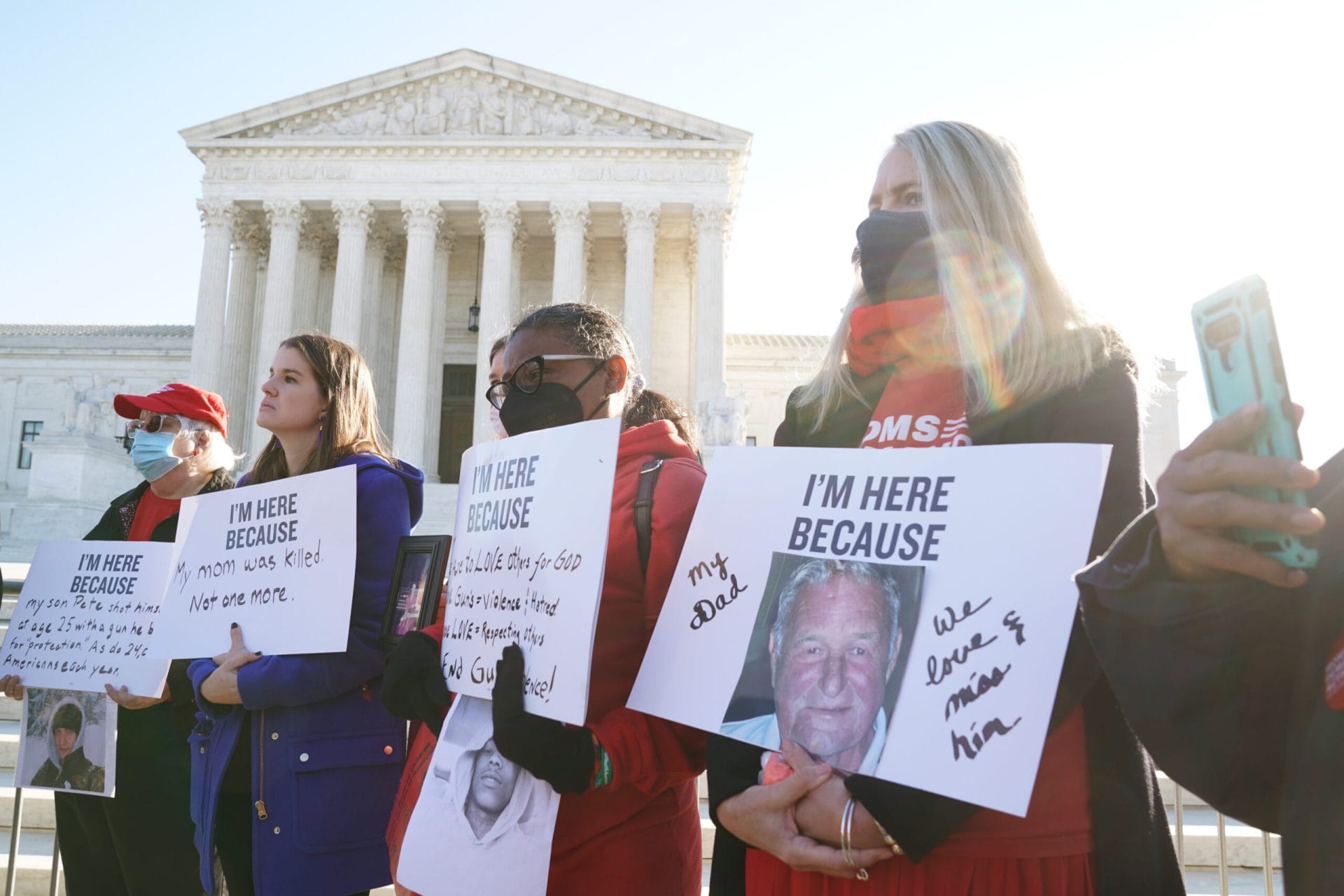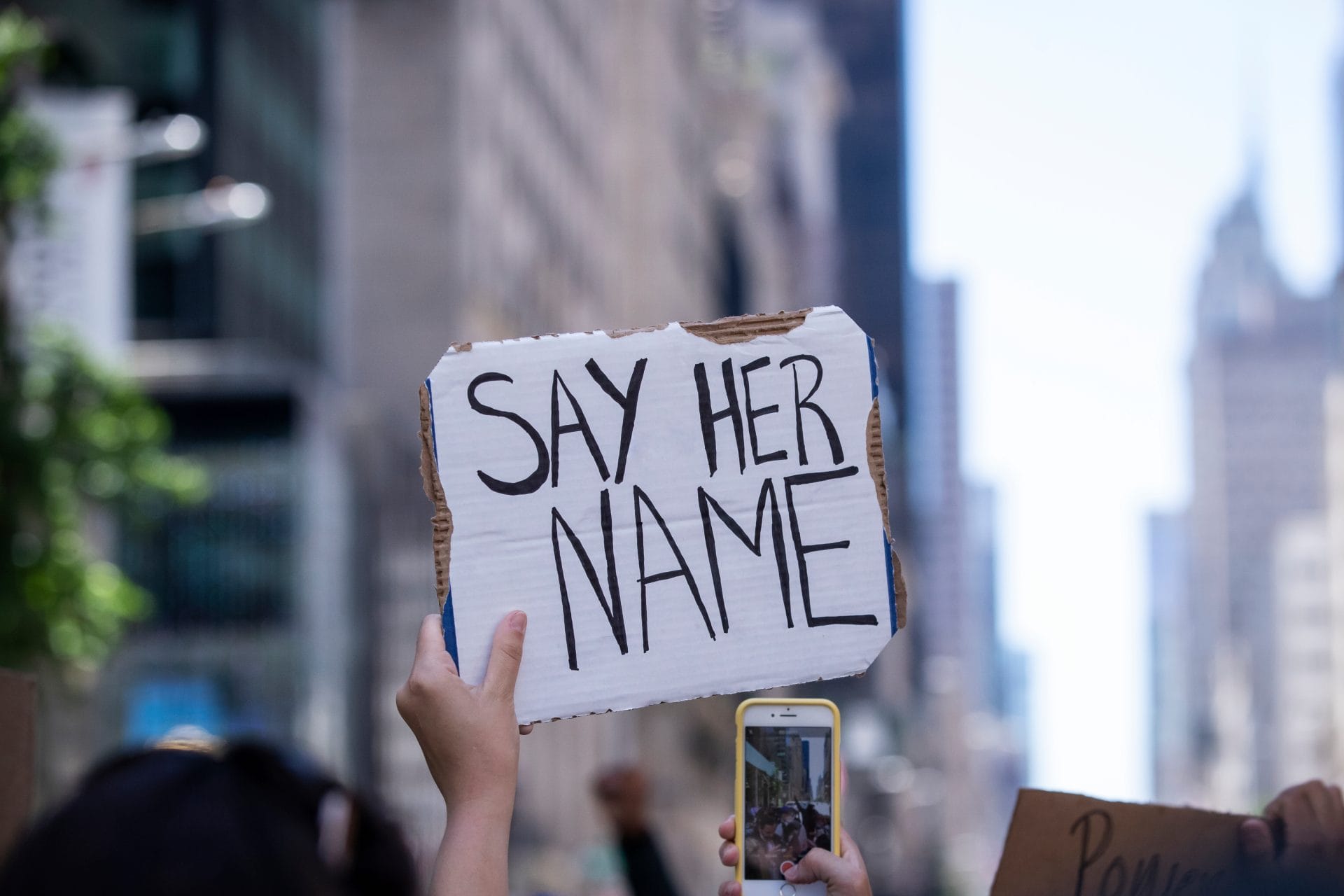
New 2020 Gun Death Data Underscores the Urgency of This Crisis
45 states and DC saw an increased gun death rate in 2020 compared to 2019.
A new release of data from the Centers for Disease Control and Prevention (CDC) shows that 45,222 people were killed by guns in 2020, a number of gun deaths not seen in decades. This represents an 15% increase in the overall gun death rate from the previous year.
This new data shows that on average, nearly 124 people died from gun violence each day—more than 15 additional gun deaths per day than in 2019. In fact, while gun deaths were unacceptably high in 2019, if they had remained at those levels in 2020, more than 5,500 Americans would still be alive today. The sharp spike in gun deaths last year comes after several years of increasing gun deaths.
Few places in America were spared from increased gun violence in 2020: 45 states and DC saw an increased gun death rate in 2020 compared to 2019. However, 2020 was a particularly deadly year for some of the nation’s most vulnerable and marginalized populations. 2,281 children ages 0–17 were killed by guns in 2020 alone, marking the highest level of child gun deaths since 1997. Additionally, more than 20,352 people of color were killed by guns—70% of whom were Black. The data below outlines the increases in gun deaths by the type of violence, as well as how particular demographic groups were impacted.
Gun Homicide
The increases in gun deaths in 2020 were primarily driven by large increases in gun homicides. 19,384 people were killed in gun homicides in 2020, representing the largest one-year increase in gun homicides on record. While 2020 did not surpass the record high rates of gun homicides in the early 1990s, 2020 saw the highest number of gun homicides in at least four decades.
These record-setting increases changed the overall picture of gun violence in the US: while gun homicides comprised 36% of gun deaths between 2015 and 2019, in 2020, nearly 43% of gun deaths were gun homicides. Guns remained the leading means of homicide in the US in 2020, and were used in a slightly higher proportion of homicides in 2020 compared to 2019: 79% vs. 75%.
These increases in gun homicides were seen across the country, with at least 46 states reporting more gun homicides in 2020 than 2019. Eight states—Connecticut, Delaware, Iowa, Kansas, Kentucky, New York, Montana, and Wisconsin—experienced a more than 50% increase in their gun homicide rate over this same period.
Gun homicides continue to take a disproportionate toll on Black and Brown Americans. In 2020, Black and Hispanic people made up 31% of the population, but 76% of gun homicide victims. Black Americans were 11 times more likely and Hispanic Americans were twice as likely to be killed in a gun homicide than white Americans. Additionally, the increases in gun homicides were more pronounced for Black Americans. While gun homicides increased 28% for white people from 2019 to 2020, Black people experienced a 39% increase.
The increases in gun homicides were similar across gender lines, though slightly larger among men, who experienced a 35% increase in the gun homicide rate from 2019 to 2020. The gun homicide rate increased 31% among women over this same time period.
Gun homicides have historically had a disparate impact on teens and younger adults. In 2020, more than 6,360 people under the age of 25 were killed in gun homicides, including 1,376 minors. These groups also experienced the largest increases in gun homicide rates in 2020. Among children and teens ages 17 and under, the gun homicide rate increased by 47% from 2019 to 2020. The gun homicide rate for 18–34 year olds increased 37% over this same period.
Gun Suicide
Gun suicide remains a leading cause of death in the US, with fatalities remaining at epidemic levels. Nearly 54% of gun deaths in 2020 were gun suicides, and the number of gun suicides rose slightly—from 23,941 in 2019 to 24,292 in 2020. Guns remained the most common method used in lethal suicide attempts, with guns used in 53% of all suicide deaths in 2020. Unlike gun suicide, the number of non-firearm suicide deaths actually declined by 8% from 2019 to 2020, with 1,883 fewer non-gun suicides over this period.
Firearm suicides have been on the rise for several years. From 2000 to 2020, the gun suicide rate rose by 18%. In fact, 2019 marked the first year since 2006 where there was a decline in the number and rate of gun suicides. Unfortunately, these declines did not persist in 2020.
Thirty states reported more gun suicides in 2020 than in 2019. While increases were relatively small in many states, three states—Delaware, Idaho, and Vermont—saw their gun suicide rates increase by more than 20% over this same period.

Guns are the most common method of suicide
Source
Centers for Disease Control and Prevention, Wide-ranging Online Data for Epidemiologic Research (WONDER), “Underlying Cause of Death, 2018-2022, Single Race,” last accessed May 1, 2024, https://wonder.cdc.gov/.
Historically, gun suicide has primarily impacted white men. This held true in 2020, with white men comprising 71% of gun suicide deaths. However, this new data suggests that suicide may be a growing problem for other demographic groups. In 2020, the gun suicide rate for white people remained stable, with 240 fewer firearm suicide deaths among this group compared to 2019. In comparison, American Indians/Alaska Natives, Hispanic Americans, Black Americans, and Asian Americans all experienced increased firearm suicide rates in 2020 compared to 2019, by 41%, 14%, 14% and 4%, respectively. 2020 marks the second year in a row where gun suicides have increased for Black Americans while decreasing among white Americans.
Overall, gun suicides decreased slightly among women, with 104 fewer gun suicides in 2020 compared to 2019, while increasing among men, with an additional 455 suicides over the same period.
Increases in gun suicide deaths were sharper among children and young adults than among older age groups. The gun suicide rate for 10 to 19 year olds increased 11% in 2020 compared to the prior year; the gun suicide rate for 20 to 29 year olds increased 15% over this same period.
Unintentional Gun Deaths
In 2020, 535 people were killed in unintentional shootings. Unlike gun homicide deaths and gun suicide deaths, unintentional gun deaths did not show pronounced spikes in 2020. In fact, the age-adjusted rate of unintentional gun deaths remained stable, although there were an additional 49 unintentional firearm deaths in 2020 compared to 2019. Importantly, however, the unintentional gun death rate remained 37% lower than 20 years prior.
Despite these promising overall trends, the new data suggests that unintentional gun deaths among children under age 18—who accounted for 23% of all unintentional gun deaths in 2020—trended in a more troubling direction. 2020 saw more unintentional gun deaths among children than any year since 2005, and a 38% increase in the rate of these deaths among this group over the prior year.
Limited data also suggests that unintentional gun deaths may have increased among people of color. Black Americans experienced a 25% increase in unintentional gun deaths from 2019 to 2020, reaching the highest number of such deaths among this group since 2006. Additionally, roughly 40% of unintentional gun deaths in 2020 involved people of color, and 52% of child unintentional gun deaths involved children of color.
Police Shootings
Police Shootings
Police violence is gun violence—and it’s long past time that we acknowledge and address it.
In 2020, the country grappled with numerous high-profile instances of police violence and misconduct, sparking a renewed national conversation about this issue. According to the new CDC data, 611 people were shot and killed by law enforcement in 2020—an 18% increase over their 2019 figures.
However, research has shown that CDC’s collection of police shooting incidents is unreliable and incomplete, due to both undercounting and misclassification of these incidents. Thus, trend demographic analyses with the CDC data are also likely to be incomplete. According to Mapping Police Violence, an independent organization that tracks incidents of police violence throughout the US, 1,078 people were shot and killed by police in 2020, a 3% increase from 2019. Nearly 96% of all people killed by police in 2020 were killed with guns.
Conclusion
At the end of each year, experts at Giffords Law Center analyze the newly released CDC gun death data. And for the last several years, we have watched gun deaths creep higher and higher, often setting new records as they climb.
But this year is different. The data from 2020 shows an enormous intensification of a crisis that already impacts too many Americans and costs too many lives. These numbers have not just set new records—they have far outpaced old records.
We cannot keep moving from one shooting to the next, keep watching this crisis get worse and worse, and do nothing. This problem isn’t going away on its own, but it is not intractable. We know that we can prevent gun violence, and we cannot wait any longer for our leaders to take meaningful steps to do so. It is now more urgent than ever that we make this public health problem a priority and invest in the kinds of solutions that we know will save lives.
JOIN THE FIGHT
Gun violence costs our nation 40,000 lives each year. We can’t sit back as politicians fail to act tragedy after tragedy. Giffords Law Center brings the fight to save lives to communities, statehouses, and courts across the country—will you stand with us?




